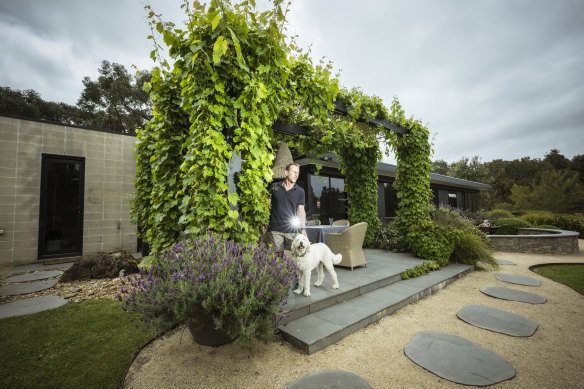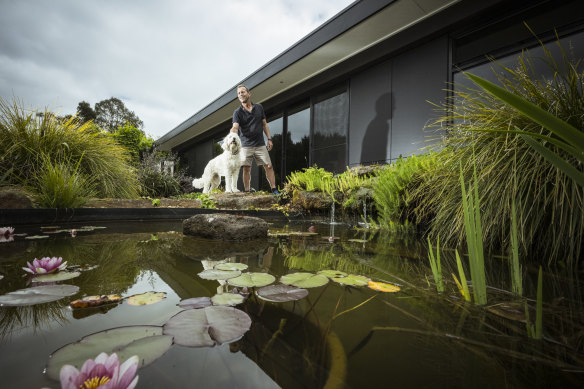
Save articles for later
Add articles to your saved list and come back to them any time.
Key points
- Prices have fallen the most in lifestyle areas.
- Regional Victorian towns with diverse economies were flourishing.
- More price weakness is expected.
Property listings
Some of Victoria’s most popular tree and sea change locations recorded double-digit house price falls over the past 12 months, following recent bumper years driven by city residents fleeing lockdowns.
In the Northern Grampians, Benalla and Hepburn local government areas prices fell the most, ranging from 16 per cent to 11 per cent over the 12 months to September, Domain’s latest House Price Report shows.
Areas that proved popular with those looking to make a lifestyle change following increased ability to work from home have posted sharp falls in median house prices over the past year.
In the Alpine council area, which includes popular holiday destination Bright, the median house price fell 10.4 per cent to $735,000, down from $820,000 in September last year. Similarly, the Surf Coast Region, which includes Torquay and Jan Juc, fell 10.3 per cent to $1.31 million.
Domain’s chief of research and economics, Dr Nicola Powell, said the market was returning to normality following some “eye watering” COVID years.
“It’s the tail end of a heightened demographic shift towards those lifestyle and tree change areas,” she said. “At its peak rate of annual growth it was 26.3 per cent. That was the steepest growth regional Victoria has seen for house prices.
“It’s a price cycle that would normally be pinned to Melbourne or Sydney.”
Outside of Melbourne, Victoria’s overall median regional house price fell 0.5 per cent in the 12 months to September.
Powell said further Reserve Bank interest rate rises, including a widely expected potential hike on Tuesday, would continue to put downward pressure on regional house prices.
Surf Coast seller Stuart Robinson is poised to reap the benefits of longer-term growth, despite recent market weakness.
Stuart Robinson said his garden, made to be low maintenance and to attract birds, would help his home stand out. Credit: Chris Hopkins
Robinson has owned his Bellbrae property for 15 years. The nearly six-hectare property has been listed with a price range nearly nine times what he paid for the block back in 2008.
Surf Coast’s median house price was 56 per cent higher than it was five years ago.
“We just spoke to [our listing agent] Tim and he just said that the lifestyle property market is still strong, so we were keen to take advantage of that if the right buyer is out there,” he said. “We want to downsize a little bit.”
Robinson runs his own eponymous landscaping business and transformed the property at 540 Brushfields Road into a secluded retreat for his family.
“We got the property from scratch and built there and did all the gardens and landscaping,” he said. “It was just a paddock before. It started from scratch and it’s reached that point where we want to see what challenges are down the track.”
McCartney Real Estate director Tim Carson had the sale, and listed the property with a range of $4.3 million to $4.5 million.
The Surf Coast’s market had returned to a more sustainable level of activity, Carson said. “It’s really shifted back to a normal market. The last six months have been pretty quiet and we’re a seasonal town.”
He said prices were coming back in the lower end of the market, where owners were more heavily affected by a rise in costs from new taxes on investment properties and interest rate rises.
Robinson said he was particularly proud of some of the ponds he’d built in the yard. Credit: Chris Hopkins
“Anyone who’s buying something worth $3 million to $4 million, the interest rates don’t affect them that much,” he said.
The biggest median price rises in regional Victoria were in the Swan Hill, Corangamite and Central Goldfields local government areas. Each had a relatively low median price – $415,000, $470,000 and $425,000 respectively. The annual rates of growth ranged from 12.5 per cent to 10.4 per cent.
Graeme Hayes Real Estate principal Graeme Hayes sells in the Swan Hill council area, and he said it was being driven by flourishing local industry.
“There’s a fair bit going on in the rural areas. The commodity prices are quite good. Some of them are in a niche sort of market … maybe for overseas products,” he said.
“Swan Hill has a good labour force and it reaches a good 50 kilometres from Swan Hill. Some of those big companies that do a lot of hay export, and north you’ve got a lot of stone fruit, as well as grapes.
“There’s also a big industry of making tanks and houses and farm machinery. Very good, solid industry.”
Most Viewed in Property
Source: Read Full Article

